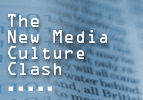



As Susan Metros taught a freshman seminar on visual literacy, she discovered that, although her students were visual learners and could view images, they could not make them. Her experience is not unique. Many students may have the ability to use digital tools, but be unfamiliar with their application for formal composition (Holder 2006, 77). In essence, they are technologically savvy, but rhetorically illiterate (Handa 2004, 3). In its guideline on multimodal literacies, the NCTE noted that students are particularly skilled in recognizing the creative potential of new technologies, but need guidance in ethical, critical and legal considerations (2005).
Indeed, some argue that current software technology instruction only prepares students to present their “immaturity” in new modalities (Faust 2006, 136). In terms of visual literacy, Steve Westbrook argues that current instructional approaches are too consumer-oriented (2006). However, to be visually literate, Metros and Woolsey contend that students must be able to both decode and encode visual imagery (2006, 81). The same requirement holds true regardless of the modality to be employed. Unfortunately, opportunities to hone and employ such production skills may be limited.The only thing we have to fear • A profess(or)ed reluctance • Visual (il)literates • Works cited • Home